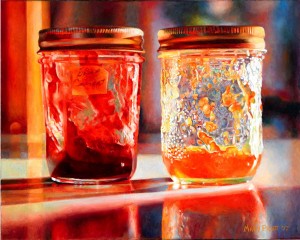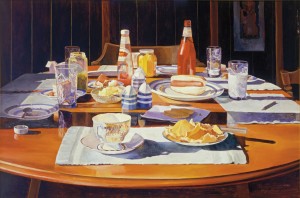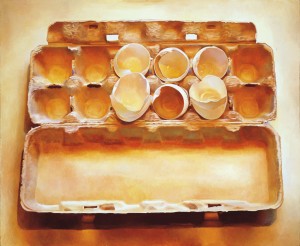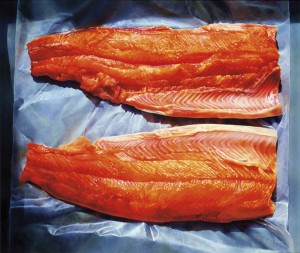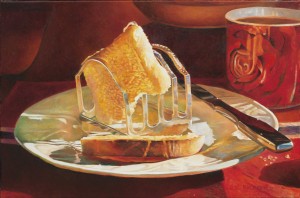November 19, 2014
Happy to Be Affiliated
 We’re getting toward the end of my blogging course, which has been the most wonderful, inspiring experience. I have enjoyed it so much, and look forward to following my students’ blogs as they grow. Though next week is the lesson I know the least about—the business of blogging. Even though my blog is ideal for an affiliation with an online bookseller, but I’ve never done this because I don’t like the predatory practices of the big online booksellers, and don’t want to profit off their gains (which tend to come at a loss for literary culture on the whole).
We’re getting toward the end of my blogging course, which has been the most wonderful, inspiring experience. I have enjoyed it so much, and look forward to following my students’ blogs as they grow. Though next week is the lesson I know the least about—the business of blogging. Even though my blog is ideal for an affiliation with an online bookseller, but I’ve never done this because I don’t like the predatory practices of the big online booksellers, and don’t want to profit off their gains (which tend to come at a loss for literary culture on the whole).
But it recently occurred to me that there was another option. Indeed, Canada’s largest online bookstore, McNally Robinson, does online orders and has an affiliates program, and I’m pleased to announce that Pickle Me This is now a part of it. When you purchase a book by McNally Robinson via a link from Pickle Me This, I will receive a cut of the profits. You can learn more about McNally Robinson’s Affiliate Program here. I will be adding links to my archived book reviews, and links will appear on all posts in the future.
I am pleased to be affiliated with McNally Robinson because I recently used their online ordering system to send a gift to a friend in Vancouver, and was really impressed with their customer service. (The book was not in stock, an actual person emailed to tell me so, and to give me the option of cancelling my order; when the book came in stock a few days later, the person emailed me to let me know.) I will be sending Christmas gifts to my sister’s family in Alberta via McNally Robinson this year for sure now, a nice alternative to Amazon. They don’t have the same discounts, but I’d gladly pay a higher price for the Amazon behemoth not to devour the entire literary world.
And books cost money because books have value anyway.
I am also pleased to be affiliated with McNally Robinson because we had such a good time there last spring when they hosted The M Word. The Winnipeg location is an incredible bookstore, a magical space, and we need more spaces like it in the world. So I’m happy to be directing some business their way, and also pleased to be leveraging this blog as a channel to my becoming a billionaire. When I make my first fortune, I promise to buy you a cup of tea.
Thank you for supporting independent bookstores, and book bloggers too.
November 6, 2014
Five Star
 Today I was quite thrilled to find my recent post, “On Uncertainty, Mistakes and Accidental Cake” included on Elan Morgan’s Five Star Blog Roundup. I was thrilled because this was some great company, writing-wise, but also because of how the Five Star Roundup reminds us that we are all readers online, as well as writers, and that there is a whole world of thoughtful writing out there to explore. So do check out the roundup, this week and every week, and many thanks to Elan for including me, and for all her work fostering community and action online.
Today I was quite thrilled to find my recent post, “On Uncertainty, Mistakes and Accidental Cake” included on Elan Morgan’s Five Star Blog Roundup. I was thrilled because this was some great company, writing-wise, but also because of how the Five Star Roundup reminds us that we are all readers online, as well as writers, and that there is a whole world of thoughtful writing out there to explore. So do check out the roundup, this week and every week, and many thanks to Elan for including me, and for all her work fostering community and action online.
September 29, 2014
May Friedman on Mommyblogs and uncertainty as a valuable critical end
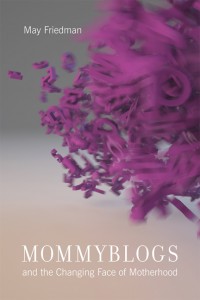 “In trying to form conclusions about mommybloggers—and about mothers—I am reminded of my children attempting to jump upon their own shadows: I am attempting to trap an essentially untrappable form of knowledge. After the initial discomfort and frustration that this inconclusive conclusion elicits, however, I have found that there is much to gained, as a researcher in general and as a motherhood researcher in particular, in looking instead at uncertainty as a valuable critical lens.” –May Friedman, Introduction, Mommyblogs and the Changing Face of Motherhood
“In trying to form conclusions about mommybloggers—and about mothers—I am reminded of my children attempting to jump upon their own shadows: I am attempting to trap an essentially untrappable form of knowledge. After the initial discomfort and frustration that this inconclusive conclusion elicits, however, I have found that there is much to gained, as a researcher in general and as a motherhood researcher in particular, in looking instead at uncertainty as a valuable critical lens.” –May Friedman, Introduction, Mommyblogs and the Changing Face of Motherhood
This is a kind of criticism that does not pit the critic against the text, does not seek authority. It seeks instead to travel with the work and its ideas, invite it to blossom and invite others into a conversation that might have previously seemed impenetrable, to draw out relationships that might have been unseen and open doors that might have been locked.” —Rebecca Solnit, “Woolf’s Darkness: Embracing the Inexplicable”
It pains me to link to this smug and stupid post I wrote in May 2009, just 11 days before my first child was born. When I purported to understand anything in Rachel Cusk’s A Life’s Work, because I really didn’t. And when I tried to pin down mommybloggers, detailing my discomfort with the form, and my discomfort with that discomfort. I thought I had it all sewed up, because I was surer of things then, and I had no idea of the seas of uncertainty I’d be wading into when it came to mothering, motherhood, and issues around motherhood. Five years later, The M Word was to be partly my means of coming to terms with the beauty of the mess of it all—when in doubt, make an anthology.
When, three months after that embarrassing 2009 blog post, I reviewed the book Mothering and Blogging: The Radical Act of the Mommy Blog by May Friedman and Shana Calixte, my thinking had evolved somewhat, but I was still pretty stupid. (This is the curse of any blogger: you are forever presented with undeniable evidence that you were pretty stupid. And that mostly likely you still are.) But I was getting a sense of things—that motherhood and any ideas surrounding motherhood refused to stay put in my tidy pat conclusions, and that there were many women who didn’t want even them to.
May Friedman’s new book, Mommyblogs and the Changing Face of Motherhood, occurs at a pivotal intersection in my writing life. Outside of my blog, it is my writing about motherhood and my mothering life that has found most resonance with readers, so much so that when a recent published story contained nary a reference to mothers anywhere, I was a bit relieved. And I’ve also been blogging for 14 years this October, which has led to the opportunity to teach the course, The Art of Blogging, at the University of Toronto (whose latest session starts a week from tonight!). In my blog teaching, I embrace and celebrate the messy chaos of the blog form, as unpindownable as mothers are. (You can read my posts with thoughts on blogging here.) I welcomed the reflections, revelations and insights of Mommyblogs and the Changing Face of Motherhood not just for what they had to say about mothers and mommyblogs, but for the perspective the book provided on the history and implications of the blogosphere with a lens on women (who, as in any history, are so often left out of the story).
True confession: I have an allergy to Foucault, and once they start referencing Bahktin, they’ve already lost me. As an academic text, Friedman’s book stands apart from others that I’ve encountered in that her critical framework serves to transform the familiar into something altogether new, rather than rendering it intelligible. In Mommyblogs and the Changing Face of Motherhood, she examines mommyblogs in the frameworks of hybridity (as a form, of the identities of blog authors, of the experiences of readers), cyborgs (of the author and her text via technology, and also of the complex and nuanced networks created through blogging communities, how mothering is reworked away from being an individuated task) and Queer theory (a movement away from the patriarchal institution of motherhood toward an otherness) to show that mommyblogging is indeed a radical act that has already changed the way motherhood is regarded in the public sphere, and whose further implications are still before us, rich with possibility.
It is as applicable to that mythic blogosphere as a whole what Friedman has to say about “the mamasphere”: “It is precisely because it is impossible to say anything generalizable about the mamasphere as a whole that it is a radical maternal space; not as a result of the activism of individual mothers, but because of the implications of all these narratives coexisting, and the endless unspooling dialogue that therefore emerges.” That lack of generalization doesn’t freak me out anymore, and I appreciate Friedman’s excellent book for reminding me why certainty is anathema to everything I like best about the world, both online and off.
See also: “Mary Pratt, On Blogging, and Preserving Light and Time”
August 24, 2014
Discover The Art of Blogging at UofT
 It has been ages since I taught The Art of Blogging at the University of Toronto’s School of Continuing Studies, but I’m so pleased that the course is being offered this fall. Online is such a fast world that blogging has changed a lot since I last taught the course, and so has some of my thinking about blogging. Moreover, teaching small blogging workshops (like at the Wild Writers Festival in Waterloo!) has taught me a lot about the best way to present this kind of material and get students engaged. And so all of this will really culminate in a fresh and exciting class, I think. I’ve revised the course outline significantly (you can view it here!). We’re going to focus on learning to love the unpolished nature of the blogging, and embrace its work-in-progress-ness, and there will be lots of writing exercises to get students used to blogging efficiently. We’re going to explore using blogging in a way that fits neatly into your life, and even how blogging can make you live your life a bit better. I look forward to good discussion, sharing of experiences, lots of inspiring blog reading, and delving into the history of this fascinating medium as we all move forward as part of its future.
It has been ages since I taught The Art of Blogging at the University of Toronto’s School of Continuing Studies, but I’m so pleased that the course is being offered this fall. Online is such a fast world that blogging has changed a lot since I last taught the course, and so has some of my thinking about blogging. Moreover, teaching small blogging workshops (like at the Wild Writers Festival in Waterloo!) has taught me a lot about the best way to present this kind of material and get students engaged. And so all of this will really culminate in a fresh and exciting class, I think. I’ve revised the course outline significantly (you can view it here!). We’re going to focus on learning to love the unpolished nature of the blogging, and embrace its work-in-progress-ness, and there will be lots of writing exercises to get students used to blogging efficiently. We’re going to explore using blogging in a way that fits neatly into your life, and even how blogging can make you live your life a bit better. I look forward to good discussion, sharing of experiences, lots of inspiring blog reading, and delving into the history of this fascinating medium as we all move forward as part of its future.
June 11, 2014
Well-known blogger is an oxymoron
“The Andrew Sullivan era of journalism is over. Blogs — defined as “an eclectic, scattered” reverse-chronological journal, “covering everything from foreign policy to TV to religion,” often in the first-person — are all but dead.” (This was actually posted on a blog. Alas).
It’s on a regular cycle that I come across articles about news outlets shutting down their blogs, this offered as proof that the blog is dead. All the while, I sit here typing at my blog, which I’ve been writing for fourteen years, with every intention to keep on writing my blog, first because I can’t stop and also because it’s done me a world of good professionally and in terms of general well-being. As I sit here typing at my blog, momentarily distracted by the blogs of others (who am I reading lately? I love how Sarah from edge of evening and I have such serendipitous reading habits; I’m a new reader of Alice Zorn’s blog; longtime fan of Matilda Magtree; I’ve been reading Making It Lovely since we both had daughters around the same time 5 years ago; I’ve been checking in with DoveGreyReader forever; I’m devoted to Girls Gone Child; I’ve learned so much from Rohan Maitzen’s Novel Readings; Shawna Lemary’s Calm Things; and I am so so overjoyed that Nathalie Foy is blogging books again. Oh, and you. I read your blog too. Likely, this is really so.)
So while the Andrew Sullivan era of journalism may be over, let this not be a statement about the state of the blog. First, because blogging is not journalism, and it was never meant to be. Blogging was always going to be on the fringes, so Sullivan’s new venture’s failure (in that only five pages on his site have received 100,000 page visits) is actually a statement that the blog is, um, bloggier than ever. Let it also not be a statement on the state of the blog because for many of us, the Andrew Sullivan era never registered. All the while that bloggers were making forays into mainstream media (and supposedly changing its face… until blogging died), most of us were sitting at home with our typepads, blogspots and wordpress sites. Content to be independent operators, doing our own thing, learning and growing, and pointing our modest traffic, our readers, in the direction of the world and saying, “Hey, look at this.”
It is amazing to me the way that women’s blogs have been ignored by those seeking to chronicle the history of the form. (I wrote about this three years ago in a post called, “The Womanly Art of Blogging”) Crucially, it is always the habits of male bloggers that are heralding blogging’s demise, and these are almost always political bloggers (as though political blogs are somehow blogs entire, as though politics were somehow the world—can you imagine?) but once it was a book blogger, and that too was ridiculous and wrong. It seems that everyone thinks that blogging is dead just around the same time he stops doing it. But.
All the while, the rest of us keep blogging, toiling away in semi-obscurity, and this is unfailingly true. Even well-known bloggers are semi-obscure–even those with enough ad revenue to pay the bills. Well-known blogger is an oxymoron. If it gets to be otherwise, well, maybe you’ve made it, but you’re also not really a blogger anymore.
September 27, 2013
I used to wade into fracas all the time.
I write about my children here more than I write about the wider world, the wider literary world in particular. And sometimes I feel bad about this, about the disconnect, my insularity. I don’t seem to have my finger on the button. It hasn’t always been like this either–I used to wade into fracas all the time. But then it got to the point where I could set my calendar by it–brouhaha about women writers, the Orange Prize as ghetto or goldmine, Canada Reads outrage, Giller Prize moroseness. I was writing the same blog posts all over again, in the beginning fervently hoping to bring change, hoping that if I could just explain the way things ought to be, everyone would finally understand. And then eventually despondently, as it began to become clear to me that these arguments were futile, all of us hashing out the same lines over and over again. It was even boring, and I was really tired, and there are oh so many books to read, books to write about instead. And yes, my children, who are never ever the same, even two days in a row. So now I cease to wade, for the most part, which I fear might suggest I don’t have opinions anymore, except about out-of-date encyclopedias. Because I do have opinions, and they’re even works in progress too, but it’s progress that interests me more than opinions themselves, so I don’t bother to wade anymore.
August 25, 2013
Mary Pratt: On Blogging, and Preserving Light and Time
It is not a huge leap to look at Mary Pratt’s paintings and have thoughts turn to ideas about the containment and preservation of time. Not least of all because of her paintings of preserves, jams and jellies. Or because she shows that jam jars are containers of not only condiments, but also of light. In the essay “A Woman’s Life” by Sarah Milroy, part of the Mary Pratt book, Pratt recalls early inspiration in her mother’s jars of jelly: “Oh they were gorgeous… she would arrange them along the window-ledge–they were west-facing windows with the light coming through–red currant jelly, highbush cranberry jelly, raspberry jelly, blackberry jelly–all as clear as glass.”
In her work, Pratt also includes more prosaic containers, such as tupperware, and ketchup bottles, as well as preservation agents that capture light with a different kind of beauty–tin foil, saran wrap. Underlining this idea of preservation is that Pratt’s paintings themselves have been painted from photographs, that with a camera Pratt has been able to stop time and preserve a moment in the whirl of domesticity–a supper table that will soon be cleared away, for example. In Sarah Fillmore’s essay “Vanitas”, Pratt notes that “The camera was my instrument of liberation. Now that I no longer had to paint on the run, I would pay each gut reaction its proper homage. I could paint anything that appealed to me… I could use the slide to establish the drawing and concentrate on the light, and the content and the symbolism.”
Whilst reading the Mary Pratt book, which has been created to complement the exhibition of Pratt’s work that will be moving across the country in the coming months, I kept drawing parallels between her work and the womanly art of blogging. This precludes any arguments about amateurism of course, however much some may insist that “blogger” and “amateur” are in fact synonyms. Because Pratt is no amateur, and neither are the bloggers who make art of the form, who craft their posts themselves in order to “pay each gut reaction its proper homage.”
“…it comes from a longing to hold truth in your hands, to feel something of your own existence–a longing to feel alive… The painting of the jelly jar is really about the way that light shines through the glass, the way that light is preserved, like jelly, for all time.” -Sarah Fillmore, “Vanitas”
Pratt captures the domestic, the seemingly mundane. And yet behind her rich but also simple and familiar images lie deeper stories. Her painting “Kitchen Table”, the first she created from a photograph in 1969, is at first a quiet scene, a table at once empty and yet crowded with the remains of a meal–a ketchup bottle with its cap off, a hotdog left uneaten, crumbs on a plate, drinking glasses in varying states of emptiness (or fullness, perhaps?). And yet, as Catherine M. Mastin points out in her essay “Base, Place, Location and the Early Paintings”, “Pratt’s postwar-era family table is a site of constant labour, meal after meal–which all fell to Mary, with no foreseeable end.” On a more personal note, Pratt’s “Eggs in an Egg Crate” was the first work she completed after the deaths of her infant twins, a painting whose symbolism wasn’t clear to her until somebody else had pointed it out–that the eggs in the carton were empty.
For all their luminosity and the domestic focus, Pratt’s paintings are also wonderfully subversive. Her eggs are usually broken, is what I mean, the cake half-eaten and cut with a big sharp knife, the bananas in the fruit bowl are just a little too ripe. The meat in her “Roast Beef” is a charred hunk (and Pratt recounts in Milroy’s essay, “I can remember when I first showed it in a gallery [and] I heard a woman say, ‘Well, I guess she can paint, but do you think she can cook?'”). Milroy is correct that “In this day of highly stylized food photography…, Mary Pratt’s work seems ahead of the curve,” and yet Pratt’s food paintings are always just a little “off”–the leftovers from a supper of hotdogs, for example, or the casserole dish in the microwave. This is food that people eat, instead of a lacquered sandwich intended for a magazine cover. Hers is a messy, imperfect domestic scene, and yet there is beauty in these scenes that are captured precisely as they are.
Her images of meat and animal carcasses suggest something basic and bodily about domestic life, a suggestion echoed vaguely in the images of her model “Donna”. “That’s what women do,” Pratt recounts in Milroy’s essay. “They wrap things up, or unwrap them, or cut them open, or chop them, ready for the oven.” Fish are also a recurring image in her work, not surprising considering she’s based in Atlantic Canada, but here is the rarely seen flip-side of maritime life–“Salmon on Saran”, “Trout in a Ziploc Bag” or “Fish Head in Steel Sink”. They don’t write shanties about this kind of sea. And then there is the fire, Pratt’s burning dishcloth on her “Dishcloth on Line” paintings. That same agent used to wipe down the table of dinner-after-dinner is annihilated into a glorious flame which captures the light as intriguingly (and eternally, now that Pratt has preserved the image) as do the far more innocuous jars of jam on the window sill.
Whoever thought the kitchen was a scene of mundanity probably wasn’t looking…
In her essay “Look Here”, Mireille Eagan writes that “Ultimately, [Pratt] asks the viewer to see; she tells us: “Look, here.” Which is what the very best bloggers do too, instead of “Look at me!” using their blogs to implore their readers to, “Look at this!” The result of this being the “sideways autobiography” that Eagan refers to of Pratt’s work. There is no over-arching narrative here, and instead we come to understand the depth of these writers’ lives from the objects, moments and stories they choose to include in their blogs, each individual post its own still-life. Like Pratt, these bloggers are curating their lives, crafting something permanent out of the whirl of the ephemeral. As Eagan writes of Pratt: “Her images reveal a pattern of privacies, of things half-visible, half-said–but articulated, nonetheless. They represent a lifetime of looking closely, an intimation of the buzzing pause before one turns and continues.”
Mary Pratt is available from Goose Lane Editions. Read more about this stunning book here.
May 16, 2013
On book blogging and criticism
All my best opportunities usually come my way a week or two before or after I give birth, and you can’t say no. So at the moment, I am working on a review assignment I’m quite excited about, and I’m not remotely bothered that Baby will probably still be a little while in coming, because I have to get this article finished anyway. I am also pleased because from my post-partum stupour, I’ll see my name in print, and I imagine this will read as an encouraging sign from a world beyond (or behind) that I still exist, or at least that my writing does, somewhere. Anyway, none of this is really the point, which instead is that I’m thinking how much more time I spend on the books I’m reading for work than the books I read for fun, and what I’m missing. For example, the first time I read through this slim volume, I found it baffling and wondered how one was supposed to review a book one didn’t understand. And then I read it again, and again, and now all of a sudden I’ve got this ARC full of notes, crazy connections, ideas, and I’m working toward a spectacular synthesis of this short story collection which, you won’t believe it, won’t just be a summary of each of the stories contained within–who knew this was possible?
Now, fair enough, sometimes this isn’t possible. Some books are really as insubstantial as they appear at first reading. A lot of short story collections really are not very remarkable as wholes, or even in parts. I’ve been fortunate to have been assigned a book by a writer whose talent is extraordinary, and it’s this extraordinary work that has drawn me so deeply into this book I just skimmed across first time through. But it makes me wonder what would happen if I approached every book I read this closely, if I were this actively engaged, if all my unpaid reviews were as interesting and thought-out as this paid one is going to be. A few things: there is not time enough in the world, and the pay for my blog reviews is just the smallest bit, um, paltry for such dedication, and my blog is meant to be a kind of leisure for me, not labour. Also, for the past 39 weeks (and maybe even longer) I’ve been so so tired, but yes, I’ve be thinking about how much gets missed. What if the key to any book’s brilliance is just to read it enough times, to study it deeply enough? Of course, I’ve read enough terrible books to know the fault isn’t always mine, that there are terrible books indeed, that taste counts for something, that there are books and then there is *this book* I’m reading and writing in right now and which makes me consider the infinite possibilities of literature.
February 6, 2013
Blogging Like No One is Reading
 Blogging stats are important*, and I pay attention to mine, so I was a bit dismayed last summer when my traffic levels plummeted. Part of the problem of course was that it was summertime, when traffic always falls down a bit, but that didn’t fully explain what had happened. But then these things (particularly online things) are always about ebb and flow, popularity is fleeting, and I’ve found that whenever I get too confident about anything I’m up to, life itself has an amazing ability of administering a kick in the ass–which is always useful, I think, in healthy doses.
Blogging stats are important*, and I pay attention to mine, so I was a bit dismayed last summer when my traffic levels plummeted. Part of the problem of course was that it was summertime, when traffic always falls down a bit, but that didn’t fully explain what had happened. But then these things (particularly online things) are always about ebb and flow, popularity is fleeting, and I’ve found that whenever I get too confident about anything I’m up to, life itself has an amazing ability of administering a kick in the ass–which is always useful, I think, in healthy doses.
So what does a blogger do when her traffic falls off? I, of course, turned to my number one piece of blogging advice, which is Blog like no one is reading. It’s advice that is always useful, and never more so than during those times when no one is, in fact, reading. Blogging like no one is reading runs counter to traditional advice, which is to write for your audience, which is to jump through hoops and perform virtual naked tapdances in order to garner online attention, but I find such advice is always delivered by folks without a clue of what blogging is all about, with no real sense of the tradition it was born from.
To do the opposite of blogging like no one is reading is terrible advice for a variety of reasons. First, because most of the time, no one is going to be reading, and so there has to be something more than feedback from the outside world to push a novice blogger on. Second, because you’re never going to be able to predict what readers will respond to and what they won’t. It’s the strangest serendipity, and attempts to orchestrate this will absolutely drive you crazy. It will also result in the naked tap-dancing that just looks ridiculous, and never more so than when it doesn’t work and still, no one is reading. And there you are in your feather boa and your silly top hat, when dancing wasn’t even what you planned to be doing in the first place.
People to come for blogging for a variety of reasons. For many writers, a blog offers a way to keep a website up-to-date and active. An effective blog can be as simple as a news and events page updated monthly or so. Others come to blogging because they were advised to, because it would help their online cachet, though they don’t fully believe in the spirit of the thing. They believe that the blog is to bring forth results (ie traffic, ie book sales, ie fame and fortune) when the fact of the matter is that a blog, at its most bloggish, is its own final product. So many of us blog for the sake of the blog itself, a work of art, a creation, as eternal as a thing can be in ephemeral world of the internet. The blog is the point, the one thing you have control over anyway, rather than what anyone else happens to do with it.
The thing about blogging like no one is reading is that you really can’t go wrong. And you’ll find that this is precisely what the most amazing and popular bloggers out there have been doing all along anyway–creating something original and personal with their own interests in mind. That reams of followers were interested too was really just happenstance. (There are exceptions to this, but these are so often marketing tools rather than blogs proper. And if you don’t see the distinction between the two, then you and I were never really on the same page in the first place. And you don’t know what a blog is. But I digress…)
The thing about blogging like no one is looking is that it gives you some perspective, allows you to take a real good look at what you’re doing and why you’re doing it, and change and develop accordingly. It is easy to get caught up in a run for readers, but when winning traffic becomes your sole preoccupation, then you’re doing blogging wrong. You’re probably not having fun either.
Anyway, of course, these are all the things you tell yourself during the summer that your blog’s traffic plummets. These are the things that offer consolation. And then when you discover that the reason behind the plummet was that your blog has been hacked and is now (unknown to you) packed full of invisible ads for Viagra and therefore search engines have seen fit to abandon you and so too has all your organic search traffic, well, you get your hack fixed of course. And the numbers come back. But you just keep on doing what you’ve been doing, blogging like they haven’t, which is what you should have always been doing in the first place.
*Note: Blogging like no one is reading and paying attention to blogging stats are not necessarily contradictory. Each has its uses.
January 22, 2013
The opposite of this scattered post would be an empty space.
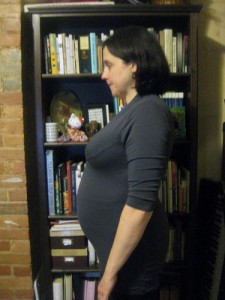 1) A friend emailed recently as she was doing a clear-out and wondered if I wanted any of her books on babies and birthing–Jessica Mitford’s The American Way of Birth, Sheila Kitzinger, Alison Gopnik’s The Philosophical Baby. And it was such a pleasure to tell her no. I’d read these books already. I remember poring over Gopnik’s book when Harriet was six weeks old, desperate for some kind of understanding of this creature who’d arrived in my life. I remember the hours spent on internet forums trying to work out a pattern in the pieces of brand new life as a mother. I remember a lot of talking about talking about motherhood, the desperation of these conversations. How important they were for me to have at the time, but how there came a time eventually when I didn’t need them anymore. I have this fantasy that when our new baby arrives in the spring and my life becomes all-baby again that literature might be my one escape from the haze. That I might spend my summer reading about everything except babies, even if it has to be done in the middle of the night while the rest of the world (except the baby) is sleeping. But I’ve never had a second child before. I do not know if my fantasy will come true.
1) A friend emailed recently as she was doing a clear-out and wondered if I wanted any of her books on babies and birthing–Jessica Mitford’s The American Way of Birth, Sheila Kitzinger, Alison Gopnik’s The Philosophical Baby. And it was such a pleasure to tell her no. I’d read these books already. I remember poring over Gopnik’s book when Harriet was six weeks old, desperate for some kind of understanding of this creature who’d arrived in my life. I remember the hours spent on internet forums trying to work out a pattern in the pieces of brand new life as a mother. I remember a lot of talking about talking about motherhood, the desperation of these conversations. How important they were for me to have at the time, but how there came a time eventually when I didn’t need them anymore. I have this fantasy that when our new baby arrives in the spring and my life becomes all-baby again that literature might be my one escape from the haze. That I might spend my summer reading about everything except babies, even if it has to be done in the middle of the night while the rest of the world (except the baby) is sleeping. But I’ve never had a second child before. I do not know if my fantasy will come true.
2) Motherhood still interests me, but on a broader level than the whole strollers on the bus brouhaha and whether breast is really best. The conversations I appreciate most about motherhood are those that don’t usually appear on the pages of glossy magazines, which rise above the Mommy Wars to broaden notions of what motherhood is and can be, and the ways in which different women’s lives are affected by various experience of maternity, and the elusiveness of “choice” (which is so often another fantasy, no?). Anyway, I’ve got more to say on the topic and the most exciting news ever forthcoming in the weeks ahead. Stay tuned.
3) We took a picture of my baby bump! How positively first-pregancy of us! It is not altogether flattering, as I’ve no make-up on, lighting is poor and I’ve had a cold for three days and it shows. But this is me at 22.5 weeks pregnant, which is kind of remarkable. I know many people find pregnancy pictures obnoxious, but as someone who has spent most of my life feeling fat and the last three years in particular trying to hide an unfortunate abdomen post c-section (3 years later, it is no excuse, I know, but still…) it is awfully refreshing to embrace and celebrate the shape I’m in. And it’s a remarkable thing, however ordinary, to have happen to one’s body, to change so much in such a short time, different every day.
4) I keep vague tabs in my mind of how my blog content is divvied up, the grown-up things, the kid things, the women things. I always have this notion that I’m doing terribly well when a string of posts doesn’t reference children or motherhood at all, and yet I don’t fully believe this either. My blog has always been a reflection of life as it is, and small children (and the books they read) have been a huge part of my life for some time now. I could pretend otherwise, but then I’d be left with not much to write about. Anyway, all of which is to say that I’m feeling self-conscious and babyish posting about pregnancy and belly-shots, but then here is where I’m at right now. The opposite of this scattered post would be an empty space.
